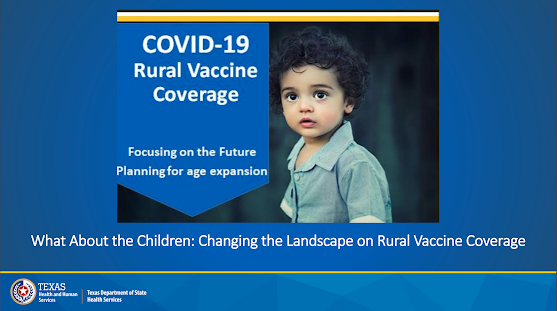There have been industrial strategies before, but the extent to which they have shaped the provision of higher education is questionable.
Past exercises of selecting scientific or technological priorities have undoubtedly had effects on the national research ecosystem, though constant chopping and changing of policy over the last decade and more has hindered this from reaching its fullest extent. But in terms of influencing what educational provision exists, and what qualifications are achieved – and where – it would not be unduly controversial to say that industrial strategy and the longer-term graduate pipeline have never really meshed.
Could this time be different? This government has certainly wanted to present its different policy agendas – on industrial strategy and skills, but also on migration, and devolution – as complementary and cohesive. And there are plenty of reasons to think that the industrial strategy will be Labour’s key reforming principle for higher education and its position within the wider tertiary sphere.
How HE shows up
Let’s begin with what has already emerged. Government guidance to the Office for Students has set out the fact that high cost subject funding in England (via the Strategic Priorities Grant, or SPG) will be refocused towards the industrial strategy from 2026–27 – a review is underway behind the scenes.
And even in the current year, the (rather meagre) £84m in SPG capital funding available in England includes £72.75m in a bidding process, where one of the two criteria to assess bids will be the extent to which the project supports Skills England’s priorities, or local economic needs. Skills England’s priority areas are the eight industrial strategy “growth-driving sectors” (which we are now expected to refer to as the IS-8) plus health and social care as well as construction.
Whether these two pots of money remain significant enough to really drive changes to HE provision – as opposed to rhetorical game-playing where the words “industrial” and “strategy” get appended to everything that institutions were already planning to do – remains an open question. The size of both recurrent and capital SPG in future years remains to be seen, but you wouldn’t bet on substantial increases.
If this were the end of it, you might think the industrial strategy’s impact on higher education would remain restricted to research and innovation – with lip service to government priorities in how the (shrinking) state contribution to teaching gets doled out. But with today’s publication of the industrial strategy in full, various other agendas begin to come into focus.
First up, the Lifelong Learning Entitlement. A more substantive announcement on the policy and legislative details is still pending, but there’s a rather significant detail in today’s strategy:
From January 2027 we will launch the Lifelong Learning Entitlement which will enable individuals to learn, upskill and retrain across their working lives. The first modular courses for approval will support progression into the IS-8.
It’s been on the cards for a while – since being re-written under Labour, the current LLE policy paper has anticipated that Skills England and the government’s skills priorities would form an important part of the LLE’s development – but here we get confirmation that the module approval process will be guided by the industrial strategy priority areas. The professional services sector plan also references a role for the LLE in helping learners take up courses relevant to that specific sector.
And it’s a similar story for the LLE’s awkward doppelganger, the growth and skills levy, which will allow employers to spend levy contributions on short courses rather than apprenticeships.
These levy reforms, which were a key pillar of Labour’s approach to skills while it was in opposition, have gone a bit quiet since, with changes at lower and foundation levels prioritised. The fact that the spending review gave the defunding of most level 7 apprenticeships as an example of DfE savings and efficiencies, rather than a way of freeing up cash for short courses, was a little ominous.
But the industrial strategy policy paper makes a link with the IS-8 sectors, giving examples of short courses in digital, AI, and engineering. April 2026 is floated as the date for rollout, though there is more to be done in development:
We will work with Skills England to determine the courses which will be prioritised in the first wave of rollout and subsequent waves, and how those sit alongside apprenticeships and other training routes. We will work with Skills England to introduce these short courses and consider how to prioritise investment across the programme.
Universities with expertise in professional and executive education – and those who are rethinking apprenticeship provision in light of changes to level 7 – will be keeping a careful eye on how this comes together.
Finally, the forthcoming post-16 education and skills strategy, including its plans for reforming the higher education sector, is described within one of the sector plans as setting out a framework “for how the skills system will support growth-driving sectors” – that is, the IS-8.
So, while all the details may not have come into focus yet, there’s a strong case to be made for the industrial strategy playing a key role in all kinds of areas crucial to higher education: the LLE, levy-funded short courses, high-cost subject funding in HE – plus such capital funding as still exists – and potentially the post-16 strategy as whole. It’s therefore worth the sector looking in detail at what the government, and Skills England, have said so far about the eight specific industrial strategy areas, in terms of skills needs, priority industries, and place.
New frontiers
The industrial strategy green paper in the autumn identified eight high-level sectors:
- Advanced manufacturing
- Clean energy industries
- Creative industries
- Defence
- Digital and technologies
- Financial services
- Life sciences
- Professional and business services.
These were the areas where the government saw the greatest potential for growth – the “picking of winners” that has characterised industrial strategies over the years. The eight that were chosen were less STEM-heavy than previous iterations of the strategy.
Over the consultation period that followed, the government sought input on what subsectors should feature in the finalised plan, and in what places – “all economic activity occurs somewhere,” as the technical annex puts it. These subsectors have now been rebranded as “frontier industries” within each sector – “those parts of each sector that best met the Industrial Strategy’s goal of long-term, sustainable, regionally balanced, and resilient growth.”
There’s much more in the annex on what respondents said, and how the frontier industries were identified – but at the end of the day, it’s more picking of winners, and plenty of areas will feel they have been unfairly overlooked. The results of the process can be seen on page 22 – for example, for the creative industries, the chosen “frontier” areas are advertising and marketing, film and TV, music, performing and visual arts, and video games.
Data definition fans will also be keen to see that this has all been mapped to Standard Industrial Classification (SIC) codes, to the extent that it is possible to do so. The technical annex highlights further revisions and improvements to occupational classifications in the future.
What’s the plan?
For each of the IS-8, there is a sector plan going deeper into what’s being proposed. We get five of them today – the financial services one is due on 15 July, the defence sector plan (also badged as the defence industrial strategy) is forthcoming, as is the life sciences plan.
Each of the published sector plans has a helpful map, usually towards the end, which tracks the specific frontier industries onto the city regions and clusters which the government has identified. For example, advanced manufacturing has ten areas selected – see page 55 on. So in the northeast England region, the focus is on automotive, batteries, and space, whereas in Wrexham and Flintshire, it’s concentrated on aerospace, automotive, advanced materials, and agri-tech. Each identified geographical area has its own specific strengths – or areas for potential growth – picked for it by the government.
Six city regions are identified for professional and business services (page 55). For the creative industries (pages 61 to 62), Dundee is spotlighted for video games and design, while for Greater Manchester it’s film and TV, music, advertising, and market research. And so on.
Each sector plan also has some more specifics on workforce and skills planning. These largely draw together things we already knew were in train – so for the creative industries for example, this encompasses everything from the ongoing curriculum and assessment review to a refreshed creative careers service.
Earlier this month, Skills England published sector skills needs assessments for each of the IS-8, along with construction and health. The new skills quango was clear – perhaps concerningly so – that at the time of writing it wasn’t privy to what exactly the industrial strategy would stipulate in each area. But the data analysis and accounts of employer engagement for each sector give us an indication of what kind of interventions might be welcomed in each.
For one thing, in many of the sectors it’s clear that there are higher-level skills needs. Clean energy industries, the quango found, will need more civil, mechanical, electrical, chemical, and environmental engineers – roles which require qualifications at level 6 and above – as well as managerial roles from levels 3 to 8. The creative industries stakeholder engagement saw a demand for more mid-career training, with the current training system “felt to overemphasise entry-level positions.” Life sciences is another “highly qualified sector.” For professional and business services, we get a direct rejection of DfE’s focus on foundation-level apprenticeships, which “do not align with the roles employers want to recruit or develop.”
In more or less all of the Skills England assessments, employers are said to want more flexible and modular training – a reiteration of the oft-expressed desire for more freedom to spend the levy on shorter courses rather than apprenticeships. The needs of the current workforce, as opposed to the pipeline, are prominent.
The upshot
It’s clear that higher education provision is vital to the success of many if not most of the industrial strategy frontier industries – but the immediate interventions and funding announcements packaged up within the industrial strategy are largely focused at lower levels. It’s well rehearsed by this point that the higher education sector’s ongoing financial turmoil is risking the loss of expertise and capacity in subject areas which the government surely wants to prioritise.
The strategy makes specific calls about what industries should be supported and in which places – but it doesn’t appear that this mapping has extended to thinking about what provision is available currently in each, and what is at risk. This might be a job for the sector in making its case.
We can see indications in the policy document, and in the background work that Skills England has been conducting, that the government will press ahead with its plans for short courses for upskilling and reskilling, whether through the levy or the LLE. Unpicking that tangle – the question of which courses are funded by which means, and why, and how to make employer or learner demand actually crystallise – is another area for universities and colleges to be coming up with concrete proposals for. Having specific industries linked to specific places should be an enormously helpful starting point.
The specificity on offer in the finalised plan ought to be a clear indication that, for higher education institutions, demonstrating a link to the industrial strategy in one’s provision will not just be a case of talking up the volume of one’s life sciences provision, for example, and its international renown. There’s a need for – and now scope to provide – much more granular detail.
The ambitions of the strategy, were they to be realised, include a recipe for a more differentiated sector, with concrete choices made around engagement with key local industries and contribution to their associated workforce pipelines. A read-across can be made to UKRI chief executive Ottoline Leyser’s comments last week about the future shape of the research landscape, with the need for “consolidation” and playing to one’s local strengths – you could make the same argument for educational provision.
There’s a question about how much such change in the landscape of provision would be either desirable or practical, given the sector’s closely guarded autonomy, the fact that graduates are mobile and may change plans, the transferability of many if not most higher level skills, and the extremely short lifespan that previous industrial strategies have had. Another issue is how those institutions which do not find themselves in, near, or otherwise connected to the anointed clusters and growth regions should respond.
But it remains a crucial agenda for higher education, even if a large-scale reorganisation of provision is problematic to pull off at a time of great financial strain. Some tweaks to how the Strategic Priorities Grant works in England are unlikely to make much headway by themselves, and it remains to be seen to what extent the devolved nations are up for steering their university sectors to better align with Westminster’s chosen priorities. For higher education, the question remains whether the government actually has the levers in place to incentivise this shift to happen – to say nothing of the political appetite to invest time and resources – or whether the subject choices of UK 17 year olds and international postgrads will continue to be the main determinant of the sector’s size and shape.








